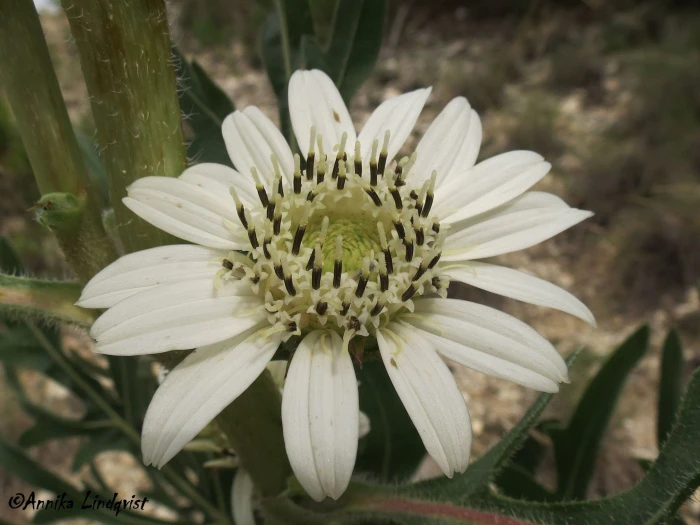White Rosinweed
(Silphium albiflorum)
White Rosinweed (Silphium albiflorum)
/
/

Annika Lindqvist
CC BY 4.0
Image By:
Annika Lindqvist
Recorded By:
Copyright:
CC BY 4.0
Copyright Notice:
Photo by: Annika Lindqvist | License Type: CC BY 4.0 | License URL: http://creativecommons.org/licenses/by/4.0/ | Rights Holder: Annika Lindqvist | Publisher: iNaturalist | Date Created: 2014-06-14T09:10:35-07:00 |


















Estimated Native Range
Climate Requirements
| • Precipitation | 32" - 39" |
| • High Temp. | 94°F - 96°F |
| • Low Temp. | 31°F - 35°F |
Summary
Silphium albiflorum, commonly known as White Rosinweed, is a tall perennial herb native to the calcareous prairies and open grasslands of central Texas. It can reach a height of 3 to 6 feet (0.9 to 1.8 meters) and is characterized by its rigid, deeply divided leaves and stout, upright stems. The plant produces showy white flowers from late spring through mid-summer, which are attractive to pollinators such as bees and butterflies. White Rosinweed is a slowly-growing but long-lived species that has evolved to thrive in the harsh conditions of its native habitat, including hot, dry summers and poor, rocky soils.
White Rosinweed is valued for its drought tolerance and its ability to adapt to challenging growing conditions, making it suitable for xeriscaping and native plant gardens. It is often used in restoration projects to support local ecosystems and biodiversity. In cultivation, it requires minimal maintenance once established, preferring full sun and well-drained soils. While not commonly found in the nursery trade, it is sought after by native plant enthusiasts and conservationists. Its slow growth rate and low seedling recruitment make it vulnerable to habitat loss and competition from invasive species.CC BY-SA 4.0
White Rosinweed is valued for its drought tolerance and its ability to adapt to challenging growing conditions, making it suitable for xeriscaping and native plant gardens. It is often used in restoration projects to support local ecosystems and biodiversity. In cultivation, it requires minimal maintenance once established, preferring full sun and well-drained soils. While not commonly found in the nursery trade, it is sought after by native plant enthusiasts and conservationists. Its slow growth rate and low seedling recruitment make it vulnerable to habitat loss and competition from invasive species.CC BY-SA 4.0
Plant Description
- Plant Type: Herb
- Height: 2-5 feet
- Width: 1-3 feet
- Growth Rate: Moderate
- Flower Color: White
- Flowering Season: Spring, Summer
- Leaf Retention: Deciduous
Growth Requirements
- Sun: Full Sun
- Water: Low
- Drainage: Medium
Common Uses
Bee Garden, Bird Garden, Border Plant, Butterfly Garden, Low Maintenance
Natural Habitat
Calcareous prairies and open grasslands of central Texas
Other Names
Common Names: White-flowered Rosinweed
Scientific Names: Silphium albiflorum
GBIF Accepted Name: Silphium albiflorum